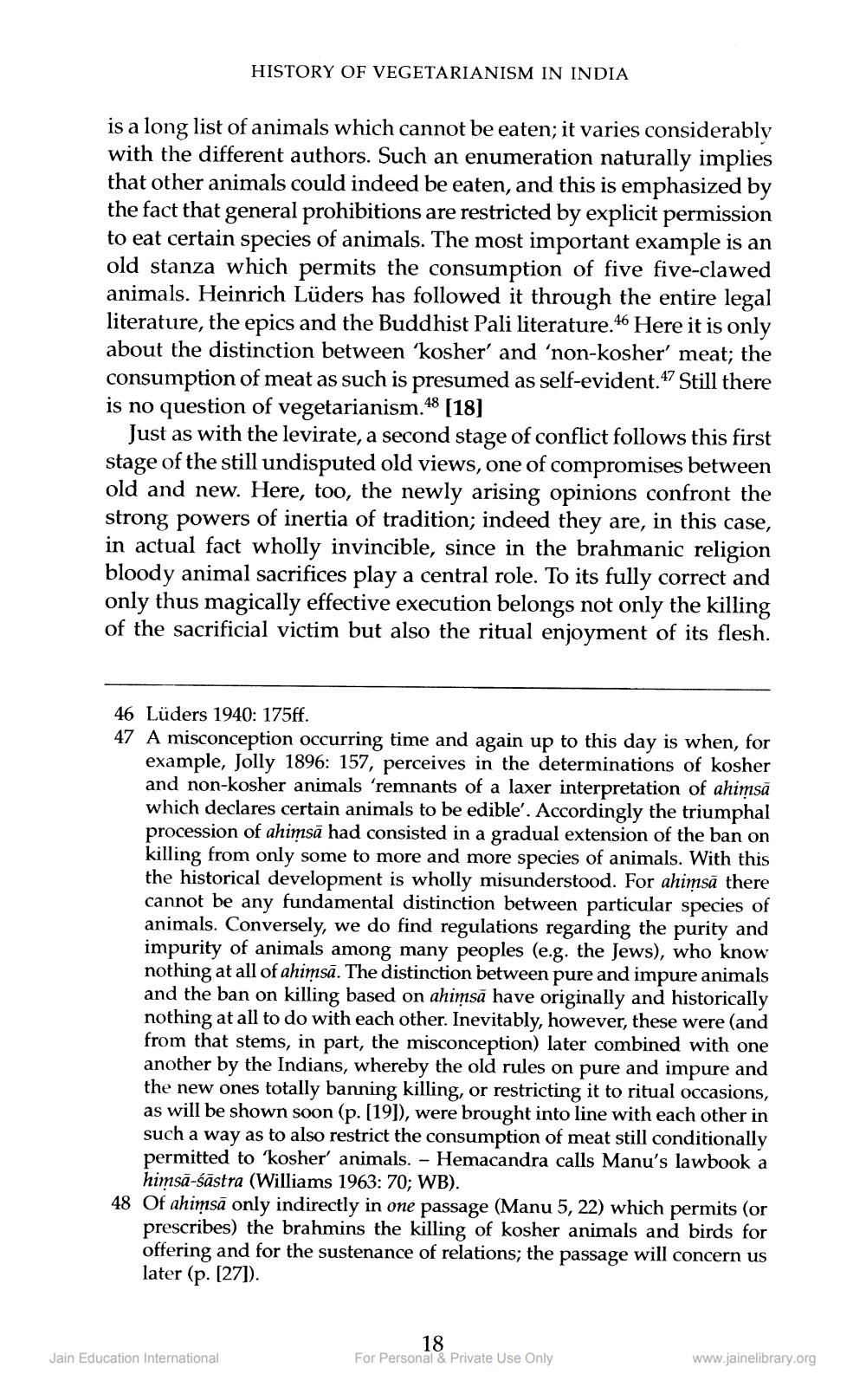________________
HISTORY OF VEGETARIANISM IN INDIA
is a long list of animals which cannot be eaten; it varies considerably with the different authors. Such an enumeration naturally implies that other animals could indeed be eaten, and this is emphasized by the fact that general prohibitions are restricted by explicit permission to eat certain species of animals. The most important example is an old stanza which permits the consumption of five five-clawed animals. Heinrich Lüders has followed it through the entire legal literature, the epics and the Buddhist Pali literature. 46 Here it is only about the distinction between 'kosher' and 'non-kosher' meat; the consumption of meat as such is presumed as self-evident. 47 Still there is no question of vegetarianism.48 [18]
Just as with the levirate, a second stage of conflict follows this first stage of the still undisputed old views, one of compromises between old and new. Here, too, the newly arising opinions confront the strong powers of inertia of tradition; indeed they are, in this case, in actual fact wholly invincible, since in the brahmanic religion bloody animal sacrifices play a central role. To its fully correct and only thus magically effective execution belongs not only the killing of the sacrificial victim but also the ritual enjoyment of its flesh.
46 Lüders 1940: 175ff. 47 A misconception occurring time and again up to this day is when, for
example, Jolly 1896: 157, perceives in the determinations of kosher and non-kosher animals 'remnants of a laxer interpretation of ahimsă which declares certain animals to be edible'. Accordingly the triumphal procession of ahimsā had consisted in a gradual extension of the ban on killing from only some to more and more species of animals. With this the historical development is wholly misunderstood. For ahimsā there cannot be any fundamental distinction between particular species of animals. Conversely, we do find regulations regarding the purity and impurity of animals among many peoples (e.g. the Jews), who know nothing at all of ahimsā. The distinction between pure and impure animals and the ban on killing based on ahimsă have originally and historically nothing at all to do with each other. Inevitably, however, these were (and from that stems, in part, the misconception) later combined with one another by the Indians, whereby the old rules on pure and impure and the new ones totally banning killing, or restricting it to ritual occasions, as will be shown soon (p. (191), were brought into line with each other in such a way as to also restrict the consumption of meat still conditionally permitted to 'kosher' animals. - Hemacandra calls Manu's lawbook a
himsa-śāstra (Williams 1963: 70; WB). 48 Of ahimsă only indirectly in one passage (Manu 5, 22) which permits (or
prescribes) the brahmins the killing of kosher animals and birds for offering and for the sustenance of relations; the passage will concern us later (p. [27]).
18 For Personal & Private Use Only
Jain Education International
www.jainelibrary.org




